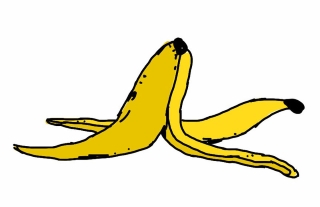| layout | title |
|---|---|
page |
Making Comparisons |
In English, if you want to show that something is different to something else in some way, you use comparatives.
- It is slower.
- This is more comfortable to wear.
- My brother is taller than me.
And if you want to say that something is the best, no questions asked, then you use the superlative.
- We're here because you're looking for the best of the best of the best, sir! (MIB, 1997)
- He is the fastest man in the world.
- That is the most beautiful thing I've ever seen!
Naturally, Hungarian solves this issue with attachments.
To use the comparative, attach -bb to the end of a noun, and to make that comparative into a superlative attach leg- to the start of that noun. To go even further beyond we can attach leges- to exaggerate the superlative.
- Te vagy a legnagyobb hős a világon! - (You are the biggest hero in the world!)
- A szomszéd fűje mindig zöldebb. - (This is an expression: The neighbour's grass is always greener.)
- Ő a legeslegszebb lány számomra. - (She's the most beautiful girl for me.)
Note: számára is a postposition, in this case számomra is more intentional than nekem.
BEWARE: Some nouns will have their vowels shortened when attached. Here are some examples:
- szép - szebb
- jó - jobb
- kevés - kevesebb
Barnabás: Szerinted melyik ing áll jobban nekem?? (Original image, merging free images together)
Éva: A kék ing, mert jól megy a többi ruhádhoz.
Barnabás: According to you which shirt looks better on me?
Éva: The blue shirt, because it goes well with your other clothes.
Both így and úgy are adverbial pronouns, and are used to describe how a verb is done. Thus, both roughly translate into this way, or that way and typically go alongside verbs.
The way they are used differs a fair amount. Úgy is mainly used to refer to something in the sentence, or in response to what one says. Így however, generally refers to the context of the situation.
- Úgy többet tanulok, ha elmagyarázod nekem. - (I learn more (this way), if you explain it to me.)
- Úgy is jó. - (That way is good as well.) e.g. what you just said.
- Így jobb. - (It's better like this/this way.) e.g. things are better since that thing has happened.
- Segítek neki, így gyorsabb lesz. - (I'm helping him/her, it'll be quicker this way.)
- Ugyanúgy gondolkoznak, ahogy én. - (They think the same way as I do.)
Context: Alex and Barnabás are talking about their homework over the phone.
Alex: Mi a terv a feladatra? Hogyan csináljuk meg? - (What's the plan for the task? How should we do it?
Barnabás: Együtt fogjuk megcsinálni, úgy könnyebb. - (We'll do it together, it'll be easier this way.)
Both ilyen and olyan on the other hand are adjectival pronouns. They both translate roughly into this kind of, or that kind of and go alongside nouns instead. Similar to before, olyan requires explicit reference, while ilyen is typically closer to the speaker and requires context.
- Nincs olyan messze. - (It's not so far.)
- Nem kerül olyan sokba. - (It doesn't cost that much.)
- Olyan sok munkám van. - (I have so much work.)
- Ilyen az élet. - (Such is (the) life.)
- Ez lehetetlen ilyen körülmények között - (This is impossibe among such circumstances.)
- Mi is ilyenek voltunk, amikor fiatalok voltunk. - (We were like that when we were younger.)
Alex: A házi feladat határideje tegnap volt. - (The deadline of the homework was yesterday.)
Barnabás: Ilyen nincs! - (That can't be possible! lit. There is no such (thing))
The word mint is used in linkage between nouns, when it is used with the comparative, it translates to than.
- Gyorsabb vagyok, mint egy golyó! - (I'm faster than a bullet!)
- Jobb adni, mint kapni. - (It is better to give than to receive.)
- Ennél nincs szebb a világon. - (There is nothing more beautiful in the world than this.)
As you saw, mint can be substituted for the -nél,-nál case.
When mintis used with olyan or úgy, it translates to as.
- Ő olyan magas, mint én. - (He/She is as tall as me.)
- Az egyik olyan, mint a másik. - (One of them is like the other.)
- Úgy vezet, mint egy őrült. - (He/She drives like a maniac.)
- Úgy esik, mint a disznó! - (It is raining cats and dogs. lit. It falls like the pig!)
Challenges!
De az acél nehezebb a tollnál! (Image fetched from Limmy's Show, Series 3 Episode 3)
But steel is heavier than feathers!
Lyric: Ha ezt az egyet megtudom, mint te, olyan leszek! (Free image by Max Ronnersjö, fetched from Wikimedia Commons)
If I know this one thing, I will be like you!
- Using
meg-to mark telicity
Got questions? Join our discord server!: https://discord.gg/VsqppQ6


